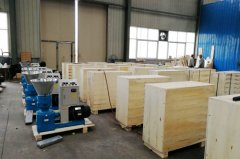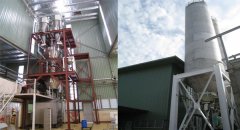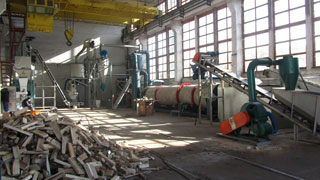What Can Biomass Pellets Bring Us?
What are biomass pellets?
Biomass pellet fuel is a new type of environmental protection energy produced by the processing of straw, peanut hull, camellia oil hull, etc. The diameter of biomass pellet is generally 6-10 mm.

What are the uses of biomass pellets?
- Feed for livestock in large farms. Easy to store and transport.
- Civil heating and household energy. Clean, pollution-free.
- Fuel for industrial boilers and kilns. It can replace coal and gas to solve environmental pollution.
- It can be used as fuel for gasification and thermal power generation to solve the shutdown problem of small thermal power plants.

What benefits can biomass pellets give us?
Biomass pellet fuel is processed from agricultural and forestry wastes. Waste reuse has been realized. The combustion of biomass pellet fuel can meet the requirements of environmental protection, reduce the pollution of burning fossil fuels to the environment, at the same time, the price is lower than that of natural gas. With environmental protection benefits, it can also bring economic benefits. It is a renewable energy for sustainable development.
What steps and machines are needed to make biomass pellets?
- Wood chips or other small pieces can be further reduced by a crusher.
- Once the material is crushed, it must be transported to the dryer. There are several ways to transport these materials, namely, screw conveyor, conveyor belt and vacuum system. Among them, screw conveyor is the most common mode of transportation.
- Before making pellets, it is necessary to ensure that the raw materials are dry. According to the raw materials used, the water content should be between 15% and 20%. In order to make the granulation process normal, the raw materials should have a proper amount of water. Drying the raw material to a proper moisture content is essential for the manufacture of high-quality pellets. Heating and drying is a very expensive part of the granulation process. Usually a more cost-effective approach is to burn pellets or firewood to generate heat. The dryer is also used to heat raw materials, which makes it more mixable.
- To make homogeneous pellets, a batch of homogeneous raw materials are important. Raw materials with the same humidity and density do not need to be mixed. Other raw materials from the dryer may have different humidity or density. If there are inconsistent raw materials, batch mixers, usually drums and mixers, should be used.
- Before producing pellets, the raw materials must have correct properties. Many raw materials contain enough natural lignin to bind together. Other raw materials may need additional additives, such as vegetable oils. If the moisture content of raw materials is too low when they come out of the dryer, water can be added or mixed with raw materials with high moisture content. Certain raw materials require more heat and pressure to make pellets, so they must be heated in advance. Normally, it is enough to heat the raw material with a dryer. But in some large pellet plants, raw materials are heated by dry steam.
- There are two basic types of pellet machine in pellet production, flat die and ring die.




